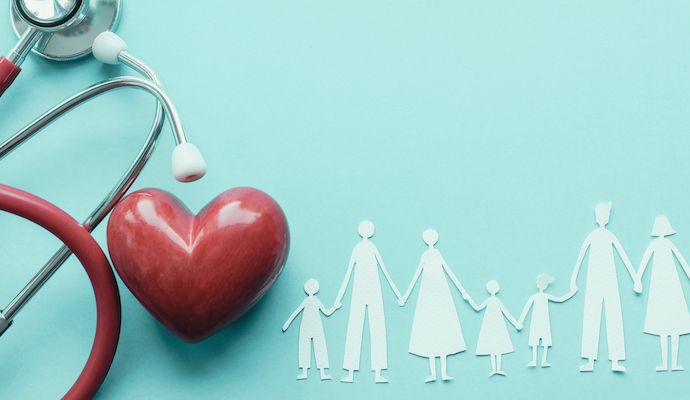Louisiana’s Population of Uninsured Children Jumped 28.2% in 2019
Louisiana’s children in lower-income families between zero percent and 137 percent of the federal poverty level were hardest hit by this historic increase.

Source: Getty Images
- The number of uninsured children in Louisiana in 2019 was 28.2 percent higher than its low number of uninsured children in 2017, following a national trend in childhood uninsurance, the Louisiana Budget Project discovered.
“In 2019, the United States and Louisiana continued a disturbing trend: a steady increase in the number and share of children without health insurance,” the report explained.
The Louisiana Budget Project’s report on the 2019 census data found that the uninsurance rate in 2019 made a historic leap, reaching the highest number of uninsured children since 2014.
“The erosion in coverage comes after years of significant gains in coverage for children, including accelerated gains after the Affordable Care Act was enacted in 2014. After a decade of bipartisan support and sustained effort, the Pelican State hit an historic low in both the number and rate of uninsured children in 2017—the reference year for this report,” the researchers explained.
In 2017, the childhood uninsurance rate in the state had decreased to 3.1 percent—36,000 Louisiana children did not have healthcare coverage.
By 2019, 50,000 children were uninsured, representing 4.4 percent of the child population in the state.
Most of those children were in low-income families, with 27,500 in families that make between zero percent and 249 percent of the federal poverty level. More than half of Louisianan children were on Medicaid, though the source of coverage differs largely based on parish, or “county.”
“Decreases in both private and public health-insurance rates contributed to the rise in uninsured rates,” the report noted.
While the increase occurred across age groups, children five years old and younger experienced a slightly higher increase in uninsurance than school-age children did.
The rise in uninsurance represented the largest single-year jump in Louisiana’s childhood uninsurance rate in ten years.
The report found the Trump administration’s efforts in opposition to the Affordable Care Act to be at fault for the declines in insurance nationwide, as well as in Louisiana.
The US dipped to its lowest childhood uninsurance rate in recent history in 2016, hitting 4.7 percent uninsurance after decreasing by 19.3 percentage points between 2014 and 2015. In 2017, however, the country started to rise and fluctuate, increasing by 7.9 percent in 2019.
Under the Affordable Care Act, the state expanded its Medicaid program in 2016 to cover low income adults, encompassing parents as well.
In 2015, before expanding, Louisiana saw a 28.6 percent drop in childhood uninsurance from 63,000 to 45,000 uninsured children. In 2016, when the state expanded its Medicaid program, the childhood uninsurance rate dropped 13.3 percent, and in 2017, when President Trump took office, the uninsurance rate fell again by 7.7 percent to 36,000 uninsured children.
After that year, however, the state saw its first rise in uninsurance since 2013 (8.3 percent).
Nevertheless, previous research has shown that Louisiana still has one of the lower childhood uninsurance rates among the states, according to the rankings in 2018 and 2019.
In Georgetown University’s 2018 analysis of childhood uninsurance, Louisiana ranked among the states with the best uninsurance rates at 3.4 percent, along with a cluster of 17 Medicaid expansion states at the top.
The state with the highest child uninsurance rate was Texas—which has not expanded its Medicaid program—at 11.2 percent, followed by Alaska—which expanded its Medicaid program in 2015—at 9.4 percent childhood uninsurance. The national average childhood uninsurance rate at the time was 5.2 percent.
The nation saw historic increases in childhood uninsurance in 2019, leading to a new overall childhood uninsurance rate of 5.7 percent, according to Georgetown’s 2019 report.
That year, Louisiana ranked 22 among the 50 states plus Washington, DC, the 2019 Georgetown report found. The uninsurance rate of children among non-expansion states was 8.1 percent while expansion states saw 4.2 percent childhood uninsurance.
Since the Louisiana Budget Project report analyzed 2019 data, it did not include the impact of COVID-19, which posed both financial and health challenges to those in the uninsured population.
Despite the decline in childhood insurance, the Louisiana Budget Project report concluded on a hopeful note.
“Our state has been a leader in protecting health care coverage for children in the past, and it can be again through a renewed commitment to ensuring that all children have high quality, affordable, and comprehensive health coverage to give them the best start in life,” the researchers said.
